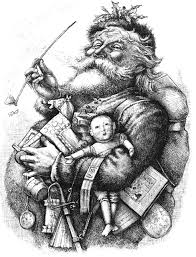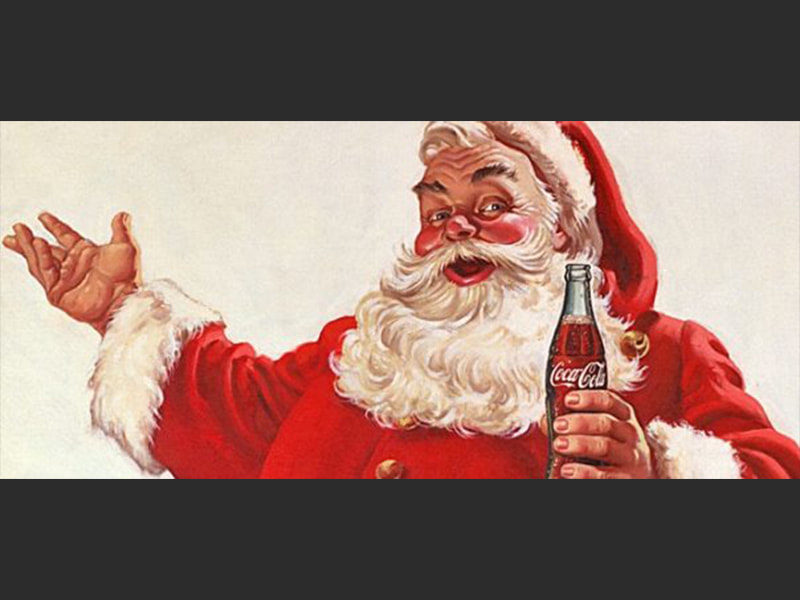|
The Breadcrumbs widget will appear here on the published site.
It’s the most wonderful time of the year and we only have a few weeks left until Santa Claus comes visiting, presents in hand. Here’s a brief history of Christmas’s beloved icon’s life and image.
by Emery Brown  photo via America Comes Alive photo via America Comes Alive
It’s the most wonderful time of the year and we only have a few weeks left until Santa Claus comes visiting, presents in hand. Here’s a brief history of Christmas’s beloved icon’s life and image.
The jolly old man finds his origins in fourth-century monk St. Nicholas, though some sources state that he was a bishop. He was known for his kindness and generosity, roaming the countryside near Myra, modern-day Turkey, and giving away his inherited wealth and other goods to those less fortunate. Most notably, he is said to have dropped a bag of gold down the chimney of a poor man to buy marriage dowries for his daughters, saving them from being sold off. While St. Nicholas begged the man not to tell anyone it was him who provided the gold not to get the attention, he did anyway, and from there on, anyone who received a mysterious gift simply assumed it was from St. Nicholas. He was later known as the protector of children and sailors. The anniversary of his death on December 6 was said to be a lucky day for big purchases and marriages and by the Renaissance, he was the most popular saint in Europe. Sinter Klaas, short for Saint Nikolaas (The Danish name for St. Nicholas), was brought to the United States in 1773 when a newspaper in New York reported on Danish families who had gathered to honor the anniversary of his death. By the 1820s, Christmas shopping was becoming popularized, and two decades later, Santa Claus’ image was used in advertisements. His popularity would reach new heights when the poem, “A Visit from St. Nicholas” was published in 1823, which detailed a chubby version of the figure climbing down chimneys to leave presents under the tree for children. He would go from home to home, delivering gifts, in his sleigh, which eight magic reindeer pulled. This poem, which would later become known as, “Twas the Night Before Christmas,” massively influenced the image of Santa in America and would become the basis of what he was known for. He became so massively popular that in 1841, thousands of children visited a single shop in Philadelphia because it had a life-sized model of him. In 1891, the Salvation Army began dressing unemployed men in Santa suits to get donations for Christmas dinners for the impoverished. American illustrator Thomas Nast created this image in 1862 for the Harper’s Weekly magazine. As Christmas became commercialized, you could see Santa’s appearance transform and become more uniform, as opposed to various interpretations such as a traditional bishop’s robe to Norse animal pelts. He also became more like the jolly, cherry-nosed figure that we think of, as he could previously seen as a tall, poorly-aged man, a malicious elf, or other appearances. Many companies adopted Santa as a seasonal mascot for large-scale advertising operations, namely Coca-Cola, which was the first company to do so. The soda giant commissioned illustrator Haddon Sundblom in 1931 to create the Santa image used in their advertisements. He based his designs on the one created by Thomas Nast and expanded upon it, as well as the appearance of a colleague. While his color scheme beforehand had varied, Sundblom dressed him in the signature red and white of the Coca-Cola Company. The popular image of Santa Claus changed seldomly thereafter, remaining the plump old saint that billions of people around the world have come to know and love. With roots in as a Christian monk, he has transcended his beginnings and grown into a magical being of generosity and joy, all with the help of advertising and a sprinkle of tradition. As Christmas approaches this month, one question remains: Which one of his lists will you find your name under? The Blog Tags Widget will appear here on the published site.
Tags:
The Recommended Content Widget will appear here on the published site.
Comments are closed.
|
INSTAGRAM FEED
SHARE US ON FACEBOOKNEWS WORTHY?Categories
All
|


12/6/2023